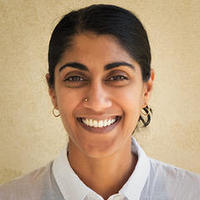 Thursday witnessed the return of a Yale institution with the inaugural Fall 2019 installment of the South Asian Studies Council’s popular Colloquium Series. On hand to match the occasion with an insightful presentation was Preetha Mani, Assistant Professor of South Asian Literatures at Rutgers University. Mani, who specializes in modern Tamil and Hindi literature, spoke on the topic of ‘The Enigma of Feminine Desire’ in a talk that delved into the expression of heterosexual relations and caste and communal identities in Post-independence Hindi and Tamil short stories. This talk focused on a part of her book manuscript that views South Asian literatures through a comparative lens to investigate the ways in which the short story emerged as vehicle for the articulation of a new type of woman.
Thursday witnessed the return of a Yale institution with the inaugural Fall 2019 installment of the South Asian Studies Council’s popular Colloquium Series. On hand to match the occasion with an insightful presentation was Preetha Mani, Assistant Professor of South Asian Literatures at Rutgers University. Mani, who specializes in modern Tamil and Hindi literature, spoke on the topic of ‘The Enigma of Feminine Desire’ in a talk that delved into the expression of heterosexual relations and caste and communal identities in Post-independence Hindi and Tamil short stories. This talk focused on a part of her book manuscript that views South Asian literatures through a comparative lens to investigate the ways in which the short story emerged as vehicle for the articulation of a new type of woman.
In her talk, Mani spoke of the ways in which the 1950s and 60s saw the characterization of feminine desire in rather novel ways - as something beyond patriarchal control. The woman in the post-colonial short story worked outside the home, sought her own partners, rejected or postponed marriage, and even had affairs. Working with two case examples of the Nayi Kahani and Eluttu literary movements in Hindi and Tamil literature respectively, Mani demonstrates how it is this insatiable, incomprehensible and un-locatable quality, one without resolution in traditional patriarchal terms, that makes feminine desire an ‘enigma.’
Nayi Kahani, argued Mani, mapped the wounds of Partiton by portraying them in terms of unrequited love in a manner that left deliberately untouched the communal question. Mani locates this in the wider historical moment, one where Nehruvian secularism’s response to the Hindu-Muslim polarity of Partition was to encourage the individual’s self-fashioning as a citizen, erasing caste and religious differences. In a particularly profound point, Mani noted the ways in which this served as a way to handle the trauma of Partition, an event that left secular believers refugees within themselves as much as it created refugees who crossed physical borders.
In South India, on the other hand, the dominant historical conundrum of the time was not one of religion but of caste. Mani highlighted the ways in which Eluttu writers took refuge in literature as reaction to the currents of the Dravidian and the self-respect movements. The taking of refuge, she argued, was epitomized in the use of Brahmin dialectical speech, a move that attempted to stand firm to Dravidian challenges and cling to caste, while also challenging conservative Brahmin geographies of domesticity.
Central to both forms of literature, argued Mani, was the use of narrative empathy as a rather novel technique to represent male-female relationships that were not yet socially sanctioned. This engagement with empathy allowed writers to draw readers into new interpersonal relations that went beyond the social questions of the time into, for example, those of aesthetics. In the process, these ultimately idealist projections erased communal and caste politics, the burning issues of their time in North and South India respectively.
Mani’s lecture was followed by an enriching discussion with a number of audience members, their fields spanning everything from Religious Studies to Economics to Anthropology. Their questions spawned fascinating debates, ranging from reflections on the lacuna in dealing with the trauma of Partition to the work of comparison in such analyses. Mani ended the talk with an emphatic comment on the latter topic, striking out at mainstream comparative literature’s inflexibility in conceptualizing Indian literature. Opening up Indian literatures to the comparative lens, argued Mani, was necessary to rise across vernacular contexts and think of wider contrasts and comparisons in constructive ways.


